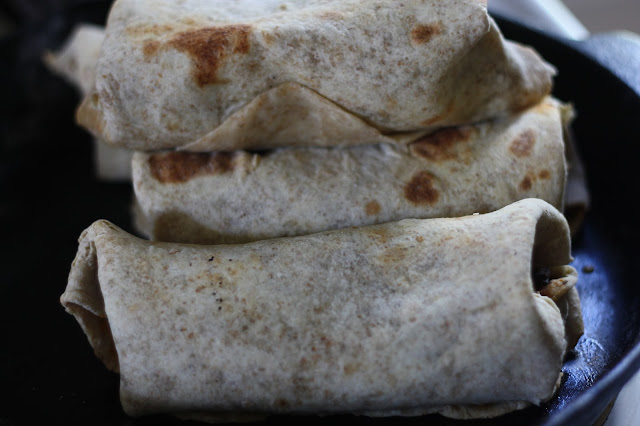The three seaweeds we gathered were Dulse, Sea Lettuce, and Kelp. Not only do I love seaweed for it's amazing briny flavour, but for it's incredible nutritional properties as well. Did you know that seaweed is high in fibre and a wide range of essential nutrients including enzymes, nucleic acids, amino acids, minerals, trace elements and vitamins A, B, C, D, E and K? It's good for your heart, blood pressure, hormonal/lymphatic/urinary/digestive and nervous systems. Need I say more?
Of the three, Dulse is the best eaten straight up out of the ocean, or savoured after it's been dried and packaged away for the winter. It's tender, delicious, and dare I say kind of like bacon? Sea Lettuce can be eaten fresh from the sea in salads, or you can dry it and reconstitute in water to make seaweed salad in the winter. All seaweeds make great additions to your wintertime soups too. My favourite way to enjoy both Dulse and Sea Lettuce is dried well and then crushed into flakes using my coffee grinder. These easy to use seasoning "sprinkles" taste fantastic on steamed vegetables, in salads, or on popcorn. Kelp can also be prepared in this way, but I mostly keep it in larger pieces once it's been dried and then I add it to my chicken stock and soups.
For those of you interested in the more technical details of how to harvest seaweed I am more than happy to share the way I go about it. As I mentioned, you need to check the tide charts for the area you know for sure has the seaweed you are looking to harvest. This is the tricky part as you generally have to learn from someone else. You want to pick a day and time when the tide is at it's lowest point. Then you show up about half an hour before this time with large empty onion bags, a pair of scissors and an empty knapsack. At our particular spot, you have to walk WAAAAY out before you see the Dulse, Sea Lettuce or Kelp. Then you make sure you cut the seaweed off the rock leaving a bit behind so that the plant can regrow. When the tide starts coming in it's important to start heading back so you don't get stuck in water that is too deep for you. I always make sure to take a big bucket of clean seawater back with me so that just as I am about to lay them out to dry in the sun, I give them a quick dip in the water to remove any sand. I have specially built racks made using wood and snow fencing which I use to lay my seaweed on. I usually hang the kelp on the laundry line. Then you just let the sun do its thing until the seaweed is crispy dry. Then I bring it in and store it in paper bags.










